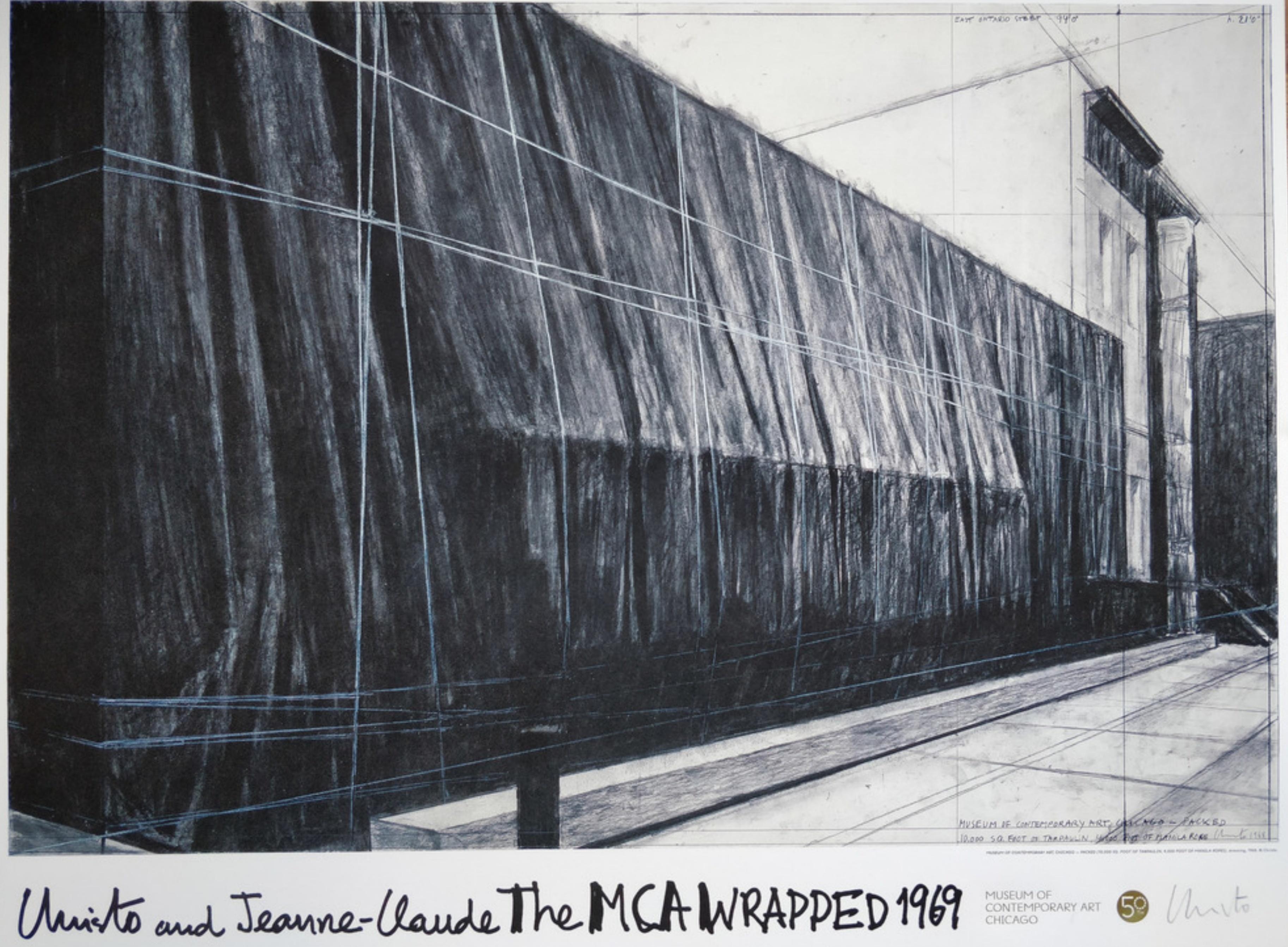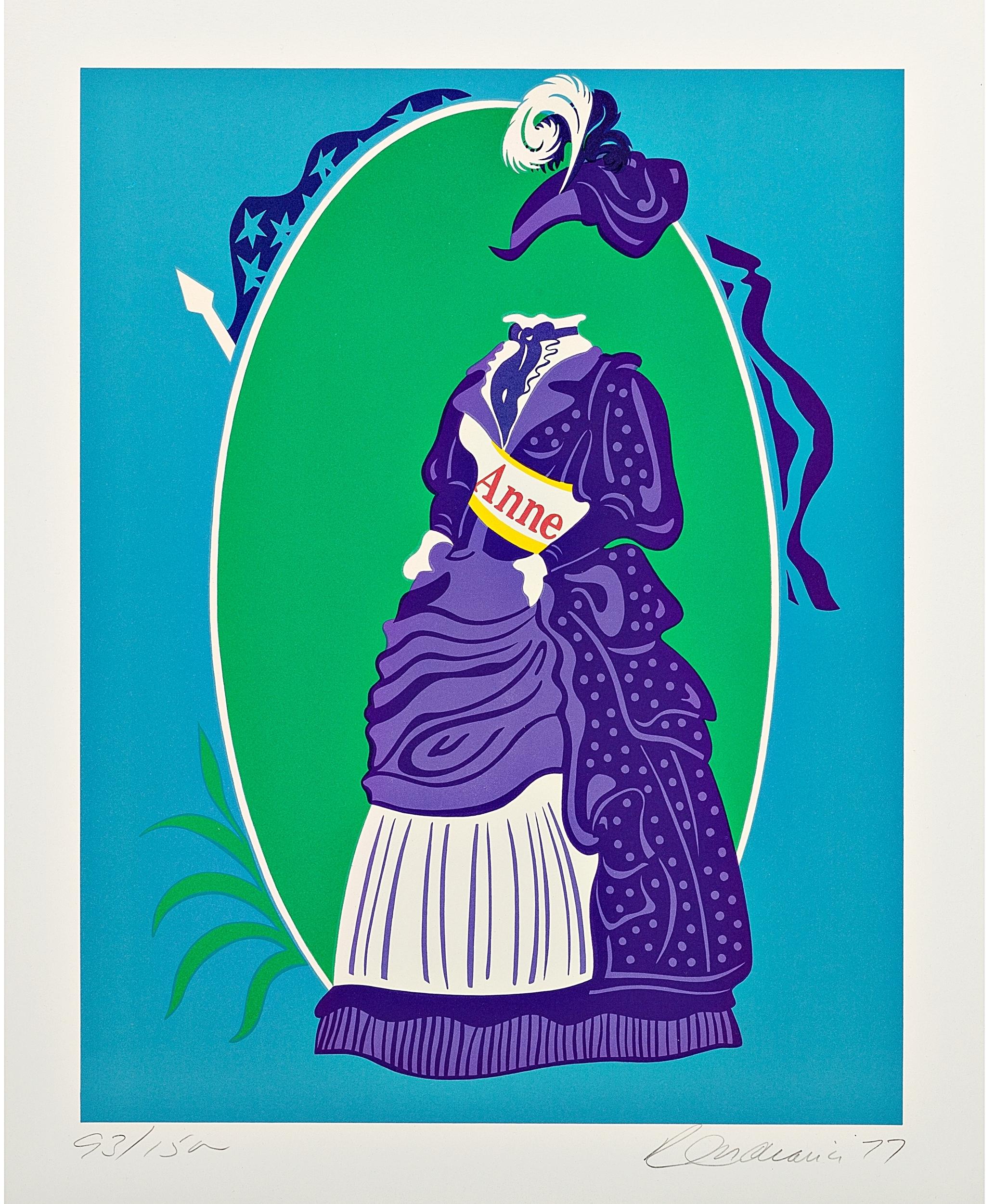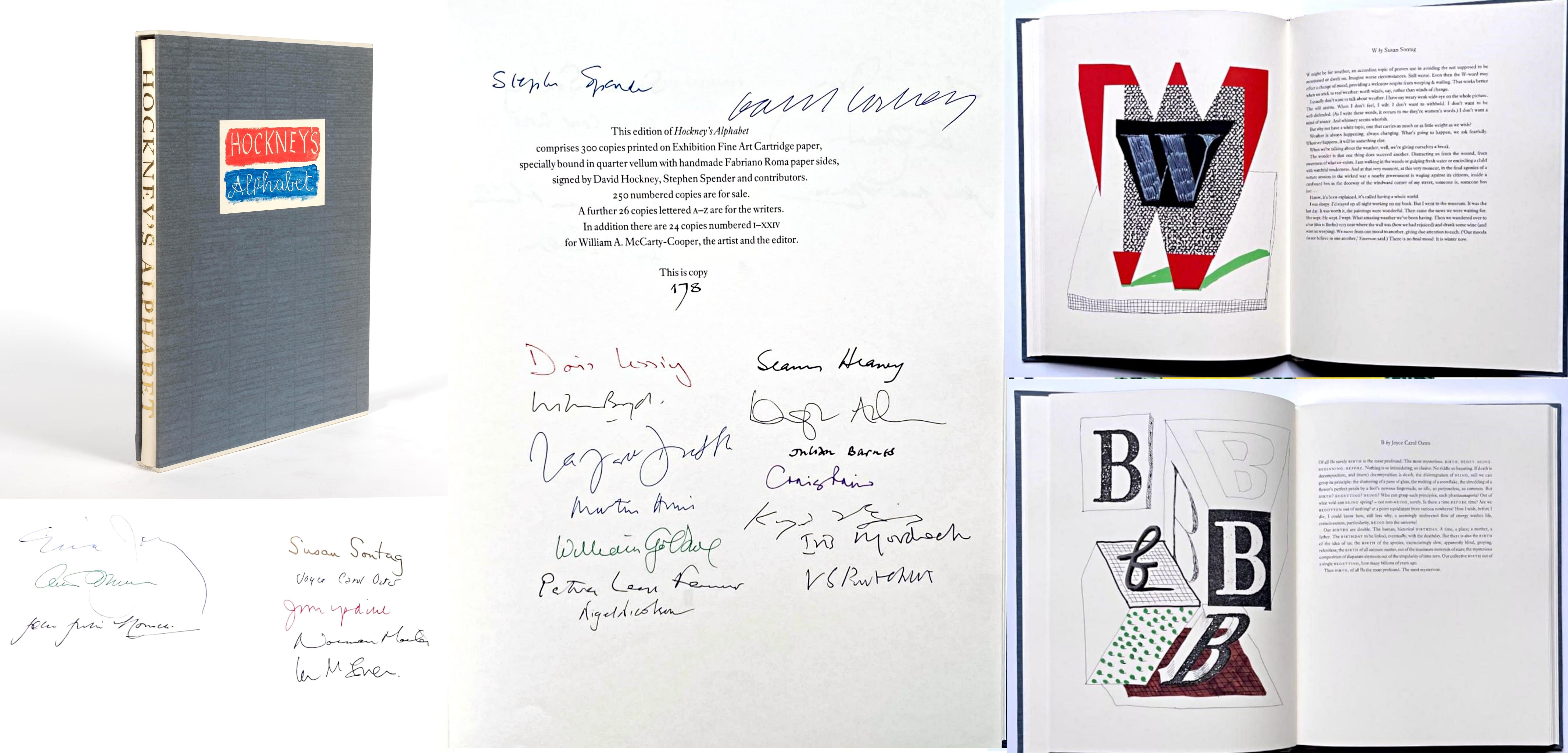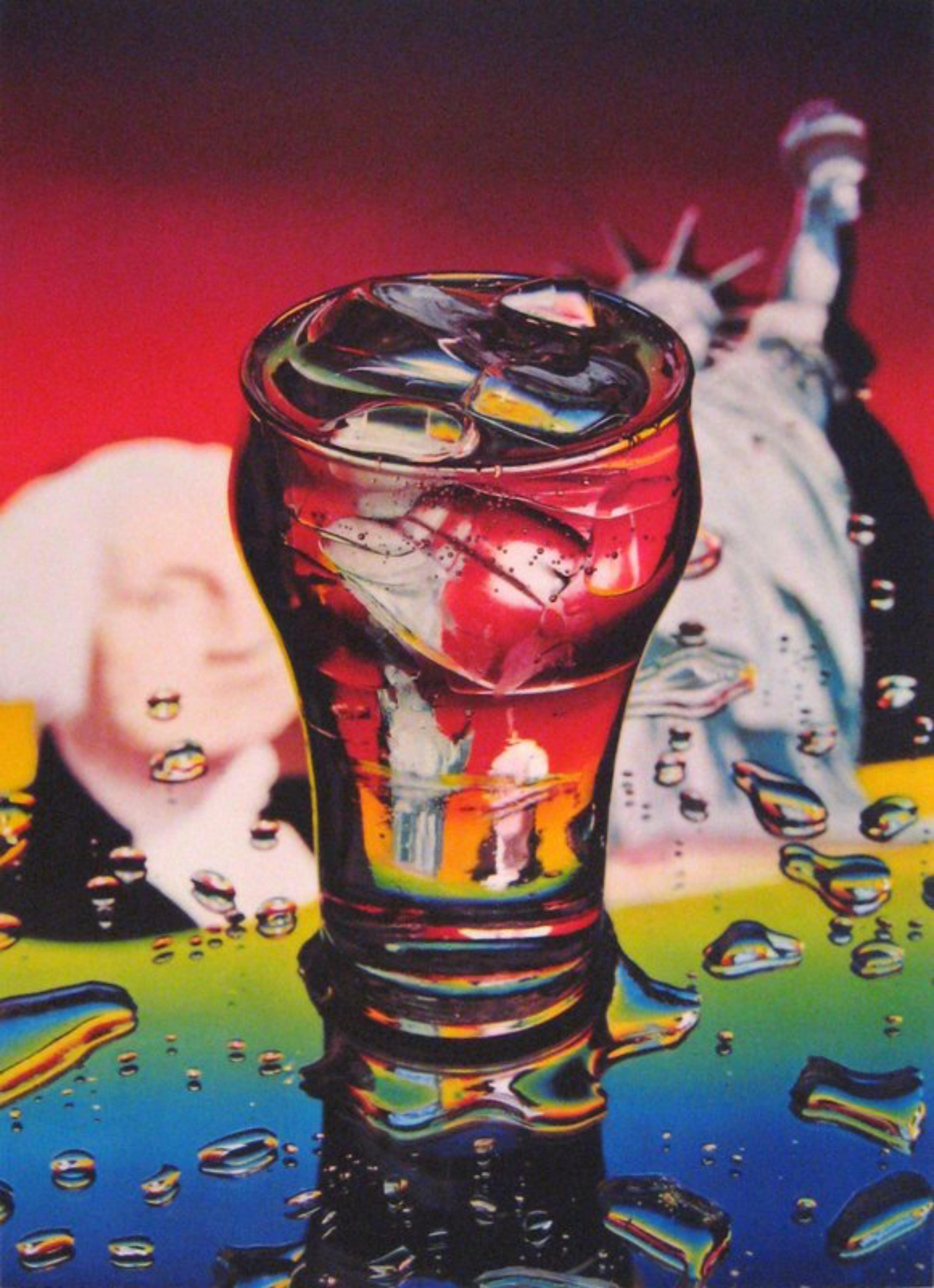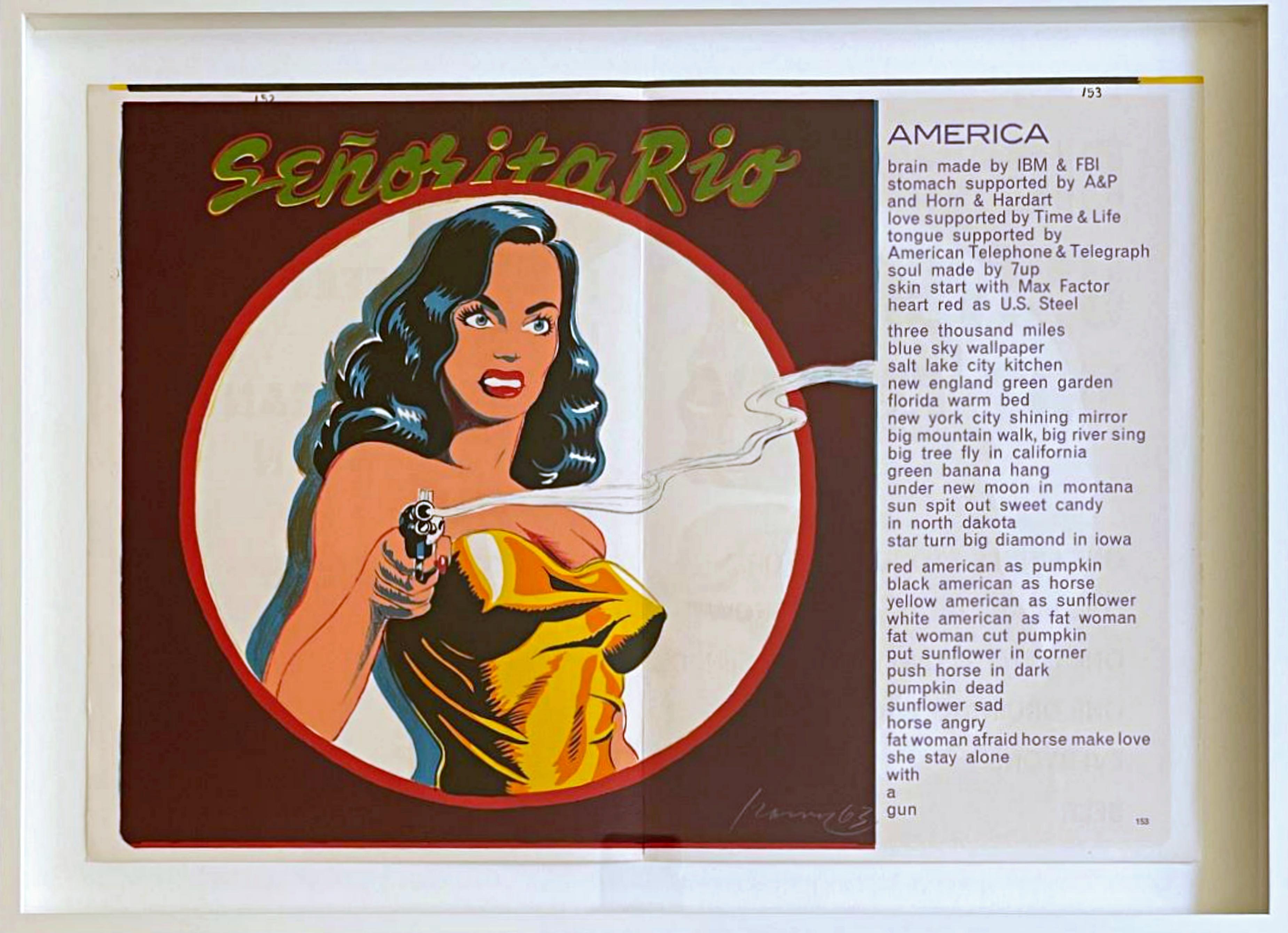Ed Ruscha Absolut Ruscha1988
1988
About the Item
- Creator:Ed Ruscha (1937, American)
- Creation Year:1988
- Dimensions:Height: 45.25 in (114.94 cm)Width: 33 in (83.82 cm)
- Medium:
- Movement & Style:
- Period:
- Condition:
- Gallery Location:New York, NY
- Reference Number:1stDibs: LU1745212538062
Ed Ruscha
Indisputably one of the most iconic American artists of the 20th century, Ed Ruscha has built a formidable body of work by staking a claim on the deceptively simple intersection of text and image, superimposing elliptical phrases (or, often, single words) over West Coast landscapes to create prints and paintings that can be read instantaneously yet evade easy understanding.
Alongside artists like Robert Irwin and Billy Al Bengston, Ruscha was a pioneer of the 1960s Los Angeles art scene as part of the famed Ferus Gallery. His embrace of Hollywood vernacular and the open Western road have tied him as closely to the identity of L.A. art as Jackson Pollock is to that of New York.
Coming to California in 1956 at the age of 18, Ruscha intended to become a commercial painter but found himself drawn to fine art, over time being shaped by three galvanizing influences: Marcel Duchamp, Pop art and the movies.
Meeting Duchamp when the Pasadena Art Museum (now the Norton Simon Museum) hosted the French Conceptual artist's first U.S. show, Ruscha was especially affected by his use of "readymade" objects and imagery, rendered unfamiliar through unexpected titles or text. Andy Warhol's Campbell's Soup can paintings, meanwhile, were shown for the first time at the Ferus Gallery in 1962, opening up new vistas for Ruscha. Movies, then, provided another inspiration through their use of title cards, placing graphic text over filmic shots — The End, for instance — for maximum impact.
Ruscha began his famous series of word paintings in the 1960s, depicting various views of the Hollywood sign and the logos of studios like 20th Century Fox, but also roadside views like the Standard Oil stations dotting L.A.'s freeways. Over time these became more abstracted, pinning ambiguous, free-floating phrases (Wall Rockets is a famous example) to natural vistas, scenes of highways, or monochrome backgrounds. Beginning in about 1980, the artist began using a sharp font he designed himself, called Boy Scout Utility Modern.
A master printmaker who also works across the mediums of books, drawing, photography and even film — in 2009 he starred in a movie directed by the artist Doug Aitken — Ruscha has been an influence on a staggering array of artists, including Stephen Shore, Christopher Wool and Anselm Kiefer.
Ruscha's work has been featured in dozens of exhibitions around the world, including "Ed Ruscha: 50 Years of Painting" at London's Hayward Gallery (2009), "Ed Ruscha: Made in Los Angeles" at Madrid's Reina Sofia in 2002, a 2000 retrospective at the Hirshhorn Museum and Sculpture Garden, a survey of his works-on-paper at the J. Paul Getty Museum in 1998, and a 1982 retrospective that traveled to the Whitney Museum. In 2005 he represented the United States at the 51st Venice Biennale, and in 2009 he received a National Arts Award.
Find a collection of original Ed Ruscha lithographs and other art for sale on 1stDibs.
- ShippingRetrieving quote...Ships From: New York, NY
- Return PolicyA return for this item may be initiated within 1 day of delivery.
- The Wrapped (MCA), Chicago 1969 (Limited Edition of 200, Hand Signed by Christo)By Christo and Jeanne-ClaudeLocated in New York, NYChristo and Jeanne-Claude The Wrapped (MCA), 1969 (Hand Signed), 2019 Four-color offset lithograph on 110 lb. Crane Lettra Cover stock, with an elegant gold foil stamp. Hand Signed by Christo 22 3/5 × 30 inches Edition of 200 Hand-signed by artist, Signed in graphite pencil by Christo on the front. Also elegant gold foil stamp. Unnumbered from the documented limited edition of only 200 Published by Museum of Contemporary Art, (MCA) Chicago Unframed A great gift for anyone with ties to Chicago! This limited-edition, hand signed offset lithograph on 110 lb. Crane Lettra Cover stock commemorates Christo's exhibition "Wrap In Wrap Out", which took place at the MCA’s original location on 237 East Ontario Street, Chicago. The project became the first public building Christo and his wife, Jeanne-Claude, wrapped in the United States. In an illuminating 2010 article entitled, "A daring plan to wrap a Chicago museum raises city ire – and makes art history," author Robin Amer recounts how Christo came to choose Chicago -- or rather how Chicago chose New York based artist Christo: "During a recent conversation he [Christo] ticked off the list of buildings he approached in downtown Manhattan starting in 1961. “Number 2 Broadway, number 20 Exchange Place,” he recalled. “We tried to wrap a building at Times Square. They all said no. Christo said he quickly realized that his best hope to wrap a building – his first in North America – would be to wrap a museum, which might be more amenable to his strange proposition.Christo and Jeanne-Claude approached New York’s Museum of Modern Art in 1967. The museum was interested, but Christo said they failed to secure permission for the show from the New York Fire...Category
1960s Pop Art Abstract Prints
MaterialsFoil
- LOVE in Central Park, New York Pencil Signed and numbered 66/89, Historic printBy Robert IndianaLocated in New York, NYRobert Indiana LOVE in Central Park, New York, 1971 Color lithograph on wove paper. Pencil signed, dated and numbered with LOVE drawing/flourish Hand-signed by artist, Pencil signed, dated and numbered 66/ 89. Also bears a drawing of the stacked letters LOVE in pencil. Bears Robert Indiana's copyright Published by Robert Indiana and printed by the American Poster Company to raise money for Central Park 39 × 30 inches Unframed This impressively large 1971 lithograph - pencil signed and numbered from the limited edition of only 89, with a stacked LOVE drawing on the front - depicts Robert Indiana's iconic LOVE sculpture (from the permanent collection of the Indianapolis Museum of Art) when it was exhibited at Central Park in New York City. This was the turn of the decade of the 1970s - during the height of the anti-Vietnam War protests of the Nixon Administration, when the presence of Indiana's monumental cor-ten steel LOVE in Central Park took on a much deeper significance in New York and indeed the country. This important print is pencil signed, dated and numbered by Robert Indiana from the very small edition of only 89. It also bears a drawing - a flourish - of the word LOVE written by the artist in pencil. Very few of the signed editions of this print remain -- so it is rarely seen on the market. Indeed, eighty nine (89) is a very small edition; however, this oversized print was used for promotional purposes in public places, so very few of the 89 signed and numbered works remain - let alone with the original stacked love drawing. . If you LOVE Robert Indiana...Category
1970s Pop Art Abstract Prints
MaterialsLithograph, Pencil, Offset
- Anne, inspired by Gertrude Stein's opera about Susan B. Anthony Signed/N printBy Robert IndianaLocated in New York, NYRobert Indiana Anne inspired by Susan B. Anthony, 1977 Color Lithograph on Arches Paper Hand Signed, dated and numbered 93 from the limited edition of 150 (93/150) front in graphite ...Category
1970s Pop Art Figurative Prints
MaterialsLithograph, Pencil
- Hockney's Alphabet, portfolio of 26 lithographs signed by Hockney and 23 writersBy David HockneyLocated in New York, NYDavid Hockney Hockney's Alphabet, 1991 26 color lithographs in Fine Art Cartridge paper bound in quarter vellum with handmade Fabriano Roma paper sides, housed in matching box; signed by David Hockney and most contributors in ink and numbered 178 in black ink on the justification page Numbered 178/250 Hand signed by 24 of the contributors, including David Hockney and Steven Spender 12 5/8 x 9 5/8 inches Bound in book and held in slipcase This portfolio features 26 color lithographs in Fine Art Cartridge paper with full margins, bound as issued, in quarter vellum with handmade Fabriano Roma paper sides, in original grey slipcase. It is signed by David Hockney (the artist) and most contributors in ink and numbered 178 in black ink on the justification page, from the edition of 250, with full text and title page, published by Faber & Faber, London, text edits by Stephen Spender, who also signed. It is illustrated by David Hockney, hand signed by David Hockney and Stephen Spender and also signed by the following contributors: Douglas Adams, Martin Amis, Julian Barnes, William Boyd, Margaret Drabble, Patrick Leigh Fermor, William Golding, Seamus Heaney...Category
1990s Pop Art Abstract Prints
MaterialsInk, Mixed Media, Vellum, Lithograph, Board, Pencil, Offset
- Yankee Flame Pop Art photorealist Lt Ed Signed/N. Statue of Liberty US PresidentBy Ben SchonzeitLocated in New York, NYBen Schonzeit Yankee Flame, from the portfolio: America: the Third Century, 1975 Collotype on wove paper Pencil signed and numbered 50/200 on the front Publisher: APC Editions, Chermayeff & Geismar Associates, Inc Printer: Triton Press 27 × 19 3/10 inches Unframed Note: this is the original hand signed and numbered collotype; not to be confused with the separate (unsigned) poster edition. This hand-signed, numbered and dated collotype in colors by photorealist pioneer artist Ben Schonzeit was created in 1975 for the portfolio America: the Third Century, commissioned by Mobil Oil Corporation in which 13 American artists, including Roy Lichtenstein, Ed Ruscha, Robert Rauschenberg, James Rosenquist and others created works celebrating America's bicentennial. Yankee Flame combines the iconic images of George Washington, Coca-Cola and the Statue of Liberty into a collaged interpretation of contemporary American life and the meaning of freedom. "Yankee Flame" is in excellent condition and never framed. It was acquired as part of the America: The Third Century full portfolio. Ben Schonzeit (b. 1942, Brooklyn, New York) is one of the original Photorealist painters and is considered to have pioneered the airbrush technique. His works often depict still life arrangements that are intentionally out of focus. He received his B.F.A. from The Cooper Union in 1964 and has since had over 50 solo exhibitions both in the United States and abroad. His paintings are held in numerous museum collections including the Solomon R. Guggenheim Museum in New York, Virginia Museum of Fine Arts in Richmond, Virginia, and the Metropolitan Museum of Art in New York. In 1973 Nancy Hoffman introduced me to Ben Schonzeit in the backroom of her gallery on West Broadway. She had been open less than a year, and Ben was one of the artists in her original stable. His large Crab Blue It had arrived from his studio a few days earlier and was leaning against the wall. I thought at the time it was one of the most impressive, virtuosic Photorealist works I had seen. That first encounter was more than a quarter of a century ago and I have always considered it to be one of the quintessential, tour de force paintings of American Photorealism. In the early seventies one could stand on West Broadway on any pleasant, sunny weekday and see less than a dozen people on the street between the Nancy Hoffman Gallery and OK Harris Works of Art. Almost all of the SoHo galleries, such as Leo Castelli, Paula Cooper, Ward-Nasse, and Ivan Karp’s Hundred Acres, could be visited in an afternoon. At night the streets were almost deserted. With the exception of Andy Warhol, there were no art world superstars. More importantly, none of the artists expected to achieve celebrity status. That was a phenomenon of the eighties and nineties. There were a only a handful of restaurants and watering holes, such Elephant and Castle, Fanelli’s, the Spring Street Bar and Prince Street Bar. Fanelli’s closed on weekends, which was a holdover from their sweatshop clientele during lunch and ragtag group of artists in the evenings. In those early days of SoHo, the drafty, raw sweatshop spaces with their large windows, rough floors, and service elevators provided large, inexpensive living quarters and studios for many artists. Unlike today, there were no boutiques. The area was not chic and with the exception of Lowell Nesbett’s showplace, the lofts were not glamorous. Schonzeit was in the same living and working space the he now occupies when I first visited him, but SoHo was a very different time and place. When the National Endowment of the Arts recommended me to curate America 1976, which turned into one of the major visual arts projects for the Bicentennial, Ben Schonzeit was on the first list of participants I made up for the U.S. Department of the Interior. His large diptych, Continental Divide, was one of the most memorable works produced for the exhibit. I stopped by his studio four or five times while it was in progress and have visited him many times over the years. We have maintained a very cordial working relationship and friendship over the past three decades. I saw The Music Room exhibit in 1978 and realized at the time that the vigorously rendered mural sized canvases and mirror and related works represented a major catharsis in his painting. In many ways, it and the other paintings and drawings based on the same image represented a sharp, decisive break with the tenets of Photorealism, or at least the photo-replicative aspects that had been so widely heralded in America and abroad in the mid-seventies. Over the years we have continued to work together. He has been in almost all of the major exhibitions I have curated here and abroad and in almost all of the books I have written. I am familiar with his studio habits, his quiet, internalized restlessness that manifests itself in the hundreds of small, unknown drawings and watercolors, doodles on napkins during lunch, and imaginary landscapes. I also know that he would rather do a painting than think or talk about it. Over the years I have followed the shifts in his studio procedure from the monumental airbrushed fruit and vegetable paintings to the most recent bouquets of flowers and decorative paintings. Our discussions of these matters tends to lapse into a verbal shorthand at this point. The following essay is based on both my longstanding familiarity and admiration for his work and involvement with contemporary realism and figurative painting. A booklet of color xeroxes with notes made up by Schonzeit was extremely helpful. In addition to several interviews, much of the information unfolded through a lengthy series of Emails. Due to our different working habits these were composed and sent out very late at night and answered by Ben the following morning. They dealt with the specifics of many of the paintings, generalities, his background and childhood in Brooklyn, and occasional bits of art world gossip. And there were odd discoveries. Prior to discussing his witty, tongue in cheek painting of Buffalo Bill, I did not know or had long forgotten that William Cody...Category
Mid-20th Century Pop Art Abstract Prints
MaterialsOther Medium, Pencil, Lithograph
- Señorita Rio, from the Deluxe signed edition of 1 Cent Life Portfolio (85/100)By Mel RamosLocated in New York, NYMEL RAMOS Señorita Rio, from the Deluxe signed edition of 1 Cent Life (Artists & Collaborators), 1963 Color lithograph on wove paper Hand signed and dated on the lower right front; print numbered on the colophon page a copy of which is affixed to the back of the frame (see photo) Edition 85/100 Published by E.W. Kornfeld, Germany, Written by Walasse Ting, Edited by Sam Francis Framed: Elegantly floated and framed in a museum quality wood frame with UV plexiglass Provenance: Acquired from original, complete 1 Cent Life Portfolio, # 85/100 (Artists & Collaborators) from the Estate and Collection of Robert Indiana This original lithograph, splayed across two pages, is from the Deluxe edition of the legendary 1 Cent Life Portfolio, one of the most documented and celebrated artistic collaborations of the 1960s. Chinese American artist and writer Walasse Ting, in collaboration with Sam Francis, assembled a group of the most significant Pop and Abstract Expressionist artists in America, including Pop Artist Mel Ramos, along with the European COBRA artist to create the definitive artistic portfolio, with text by Walasse Ting. The Deluxe edition, which features hand signed prints was published in a limited edition of only 100. This is one of them. Of the 100, editions numbered 60-100, or 40 portfolios, were reserved exclusively for Artists & Collaborators. This hand signed Mel Ramos lithograph is from the portfolio numbered 85 (Artists & Collaborators), which was acquired from the Estate and Collection of Robert Indiana, one of the artists who contribute to the 1 Cent Life portfolio. The racy text to the right of the print -- an anti-Corporate American screed, was written by Walasse Ting. It is elegantly floated and framed in. amuseum frame with UV plexiglass. Signed examples of this portfolio with such superb provenance rarely appear on the marketplace. This is a true collectors item, from the most desirable and influential era in Pop Art history. Mel Ramos became famous for his ironic portraits of pin ups and how they are used in American advertising. (see detailed biography below). The poem called America to the right of the lithograph, entitled "America" was written by Chinese born artist Walasse Ting, and matches the image perfectly, as it's also a commentary on American commercial culture. The poem begins: Brain made by IBM & FBI stomach supported by A & P and Horn & Hardart love supported by Time & Life tongue supported by American Telephone & Telegraph soul made by 7up skin start with Max Factor heart red as U.S. Steel Measurements: Framed 19 inches vertical by 26 inches by 2 inches Lithograph 16 inches vertical by 22.5 inches More about the Signed (Deluxe) Edition of 1 Cent Life portfolio In 1962, the Chinese-American artist Walasse Ting shared his dream project with painter Sam Francis: to create an anthology of his poetry illustrated by leading artists of their time. Over the next two years, Ting and Francis recruited leading Abstract Expressionists and Pop artists—Andy Warhol, Joan Mitchell, Robert Rauschenberg...Category
1950s Pop Art Abstract Prints
MaterialsLithograph, Pencil
- 1970s Surrealist Pop Art Nude Angel Lithograph Print Psychedelic ColorLocated in Surfside, FLHand Signed verso D. Herbert and numbered 1 of 20. (possibly Don Herbert)Category
20th Century Pop Art Abstract Prints
MaterialsLithograph
- Joe Tilson British Pop Art Screenprint, Color Lithograph 4 Seasons 4 ElementsBy Joe TilsonLocated in Surfside, FLSilkscreen screenprint or Lithograph Hand signed and numbered. An esoteric, mystical, Kabbala inspired print with Hebrew as well as other languages. Joseph Charles Tilson RA (born 2...Category
1970s Pop Art Abstract Prints
MaterialsLithograph, Screen
- Vintage Pop Art 1997 Offset Lithograph Larry Rivers Music Poster Hamptons NYBy Larry RiversLocated in Surfside, FLLarry Rivers "The Music Festival of the Hamptons / July 18-27 1997" poster, Not hand signed. [Dimensions: 24" H x 18" W] Larry Rivers (born Yitzroch Loiza Grossberg) (1923 – 2002) was an American artist, musician, filmmaker, and occasional actor. Considered by many scholars to be the "Godfather" and "Grandfather" of Pop art, he was one of the first artists to merge non-objective, non-narrative art with narrative and objective abstraction. Rivers took up painting in 1945 and studied at the Hans Hofmann School from 1947–48. He earned a BA in art education from New York University in 1951. His work was quickly acquired by the Museum of Modern Art. A 1953 painting Washington Crossing the Delaware was damaged in fire at the museum five years later. He was a pop artist of the New York School, reproducing everyday objects of American popular culture as art. He was one of eleven New York artists featured in the opening exhibition at the Terrain Gallery in 1955 along with Paul Mommer, Leonard Baskin, Peter Grippe During the early 1960s Rivers lived in the Hotel Chelsea, notable for its artistic residents such as Bob Dylan, Janis Joplin, Leonard Cohen, Arthur C. Clarke, Dylan Thomas, Sid Vicious and multiple people associated with Andy Warhol Factory and where he brought several of his French nouveau réalistes friends like Yves Klein who wrote there in April 1961 his Manifeste de l'hôtel Chelsea, Arman, Martial Raysse, Jean Tinguely, Niki de Saint-Phalle, Christo & Jean Claude, Daniel Spoerri or Alain Jacquet, several of whom, like Rivers, left some pieces of art in the lobby of the hotel for payment of their rooms. In 1965, Rivers had his first comprehensive retrospective in five important American museums. His final work for the exhibition was The History of the Russian Revolution, which was later on extended permanent display at the Hirshhorn Museum and Sculpture Garden in Washington, DC. He spent 1967 in London collaborating with the American painter Howard Kanovitz. In 1968, Rivers traveled to Africa for a second time with Pierre Dominique Gaisseau to finish their documentary Africa and I, which was a part of the groundbreaking NBC series Experiments in Television. During this trip they narrowly escaped execution as suspected mercenaries. During the 1970s, Rivers worked closely with Diana Molinari and Michel Auder on many video tape projects, including the infamous Tits, and also worked in neon. Rivers's legs appeared in John Lennon and Yoko Ono's 1971 film Up Your Legs Forever. From 1940–1945 he worked as a jazz saxophonist in New York City, changing his name to Larry Rivers in 1940 after being introduced as "Larry Rivers and the Mudcats" at a local pub. He studied at the Juilliard School of Music in 1945–46, along with Miles Davis, with whom he remained friends until Davis's death in 1991. Larry Rivers was born in the Bronx to Samuel and Sonya Grossberg, Jewish immigrants from Ukraine. In 1945, he married Augusta Berger, and they had one son, Steven. Rivers also adopted Berger's son from a previous relationship, Joseph, and reared both children after the couple divorced. In 1949 he had his first one-man exhibition at the Jane Street Gallery in New York. This same year, he met and became friends with John Ashbery, and Kenneth Koch. In 1950 he met Frank O’Hara. This same year he took his first trip to Europe spending eight months in Paris, France, reading and writing poetry. Beginning in 1950 and continuing until Frank’s death in July of 1966, Larry Rivers and Frank O’Hara cultivated a uniquely creative friendship that produced numerous collaborations, as well as inspired paintings and poems. In 1951 Rivers’ works were shown at the Tibor de Nagy Gallery where he continued to show annually (except 1955) for about 10 years. In 1954 he had his first exhibition of sculptures at the Stable Gallery, New York. In 1955 The Museum of Modern Art acquired Washington Crossing the Delaware. This same year he won 3rd prize in the Corcoran Gallery national painting competition for “Self-Figure.” Rivers’ also painted “Double Portrait of Berdie” in 1955, which was soon purchased by the Whitney Museum. In 1957 he and Frank O’Hara began work on “Stones,” a collaborative mix of images and poetry in a series of lithograph for Tatyana Grosman company ULAE. During this time he also appeared on the television game show “The $64,000.00 Question” where along with another contestant, they both won, each receiving $32,000.00. In 1958 he again spent time in Paris and played in various jazz bands. In 1959 he painted Cedar Bar Menu...Category
1990s Pop Art Abstract Prints
MaterialsLithograph, Offset
- Vintage Modern Lithograph Poster 1960s Pop Art Mod FigureBy Richard LindnerLocated in Surfside, FLVintage 1960's Lithograph poster for Vancouver Canada art show. Richard Lindner was born in Hamburg, Germany. In 1905 the family moved to Nuremberg, where Lindners mother was owner o...Category
1960s Pop Art Abstract Prints
MaterialsLithograph
- Large American Pop Art Color Abstract Lithograph "Black Tie" James RosenquistBy James RosenquistLocated in Surfside, FLBlack Tie, 1977 James Rosenquist, American, 1933–2017. Printed by Maurice Sanchez at Derrière L'Étoile Studios, Inc. Published by Sidney Singer Color lithograph on rolled white Arches Cover paper Blindstamp of a man in a hat, bottom right Hand signed in pencil. Dated 1977 lower right. Titled and numbered 76/100 lower left. Measures 73 1/2" x 37 James Rosenquist (November 29, 1933 – March 31, 2017) was an American artist and one of the proponents of the pop art movement. Drawing from his background working in sign painting, Rosenquist's pieces often explored the role of advertising and consumer culture in art and society, utilizing techniques he learned making commercial art to depict popular cultural icons and mundane everyday objects. While his works have often been compared to those from other key figures of the pop art movement, such as Andy Warhol, JIm Dine and Roy Lichtenstein, Rosenquist's pieces were unique in the way that they often employed elements of surrealism using fragments of advertisements and cultural imagery to emphasize the overwhelming nature of ads. He was a 2001 inductee into the Florida Artists Hall of Fame. Rosenquist was born on November 29, 1933, in Grand Forks, North Dakota, the only child of Louis and Ruth Rosenquist. His parents were amateur pilots of Swedish descent who moved from town to town to look for work, finally settling in Minneapolis, Minnesota. His mother, who was also a painter, encouraged her son to have an artistic interest. In junior high school, Rosenquist won a short-term scholarship to study at the Minneapolis School of Art and subsequently studied painting at the University of Minnesota from 1952 to 1954. In 1955, at the age of 21, he moved to New York City on scholarship to study at the Art Students League, studying under painters such as Edwin Dickinson and George Grosz. Talking about his experience at the Art Students League, Rosenquist said "I studied only with the abstract artists. They had commercial artists there teaching commercial work, I didn't bother with that. I was only interested in -- see, here's how it started. I was interested in learning how to paint the Sistine Chapel. It sounds ambitious, but I wanted to go to mural school". While studying in New York, Rosenquist took up a job as a chauffeur, before deciding to join the International...Category
1970s Pop Art Abstract Prints
MaterialsLithograph, Color
- Study of HandsBy Roy LichtensteinLocated in New York, NYCreated in 1981 as an original lithograph with screen-printing, Roy Lichtenstein’s, Study of Hands is hand-signed in pencil, dated and numbered, measuring 31 ¼ x 32 ¾ in. (79.5 x 83....Category
20th Century Pop Art Figurative Prints
MaterialsLithograph, Screen
